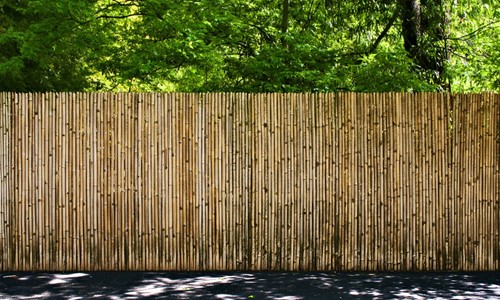
Installing a six-foot fence generally improves backyard privacy while increasing property values. But the price tag associated with fencing materials and labor often requires homeowners to invest thousands of dollars. And after the wood or composite structure has been erected, it will require maintenance, repairs and eventually need to be replaced.
Those rank among the wide-reaching reasons an increased number of homeowners are planting fast-growing trees to define property lines and create privacy. The benefits of what many call a “living fence” usually include lower costs and enhanced natural beauty. Like traditional fences, a keenly designed landscape that uses trees can also improve property values.
Along with reduced materials costs, planting fast-growing trees lends itself to a DIY project. If you have the shovels and time, digging a few holes for relatively young trees doesn’t require a contractor. Simply create holes large and deep enough to accommodate the root system, set it in place, fill in the vacant space and water as needed. There are some items that property owners will need to know before mapping out the tree line. These include the following.
How close together should you plant trees for branches to overlap?
Do you prefer year-round privacy from evergreens?
Do you prefer fall foliage from deciduous varieties?
It’s also essential to consider which varieties are best suited for a particular area and soil conditions.
When selecting the right trees for your landscape, there are a few elements to consider. The first involves choosing varieties that will naturally overlap to form a living fence. Maples, oaks, Loblolly Pines, among others, have large canopies. They rarely grow spreading limbs near ground level. The following varieties rank among the more popular ones deployed for living fences.
Green Giant Thuja:
Reaching upwards of 40 feet tall with a thick evergreen spread of 5-8 feet, this full- or partial-sun tree remains a privacy fence favorite. Known for superior density, overlapping Thuja also deter deer.
Leyland Cypress:
Maturing to upwards of 50 feet in just 15 years, this variety creates an almost impenetrable privacy barrier. With a spread of up to 20 feet when planted in rows, the Leyland Cypress also manages drought well.
Bamboo:
Ranked among the fastest-growing landscaping assets, Bamboo is actually considered a type of grass. Resistant to insects and pests, it’s essential to select a variety that achieves the height and clumping density necessary for living fence privacy.
Property owners can plant deciduous trees such as Dogwoods and ornamentals to add flowering beauty. Although such varieties may not effectively provide privacy, hedges can supplement gaps. Perhaps the important takeaway is that people have options beyond the products found at home improvement outlets.

Maurice F. Reidy & Co., Real Estate, Worcester's Oldest Real Estate Brokerage Company, Now In Our 114th Year.
Maurice F. Reidy & Co. offers clients and customers in the central Massachusetts markets a real estate advisor and brokerage that provides expertise in sales, leasing, and consulting services for all types of property. Joe Reidy, Realtor Emeritus is the owner/broker of the firm.